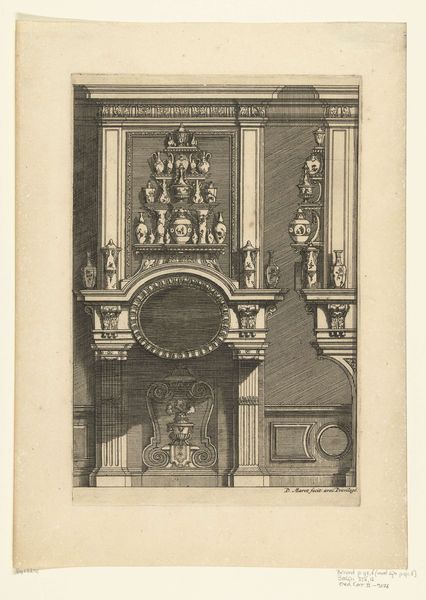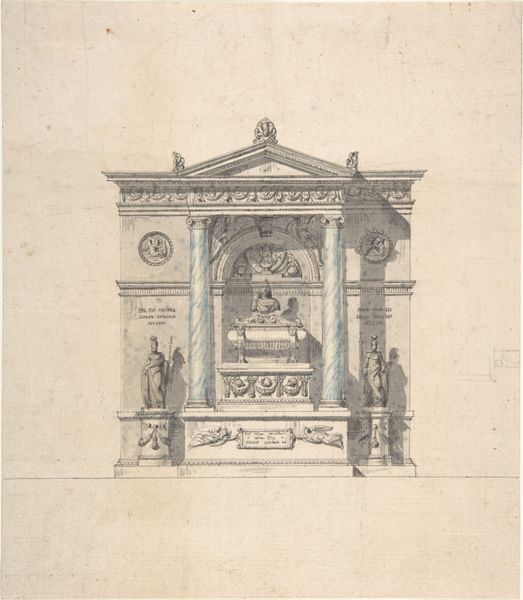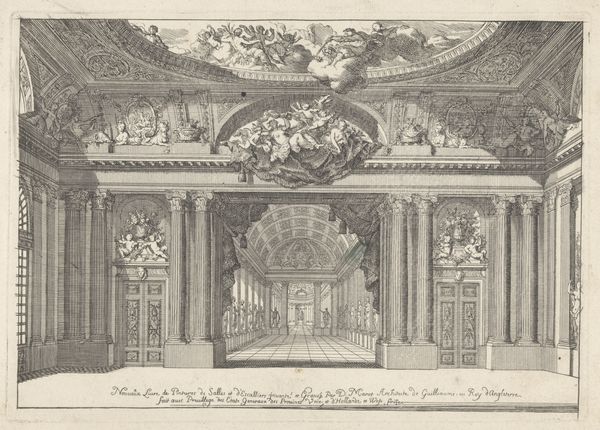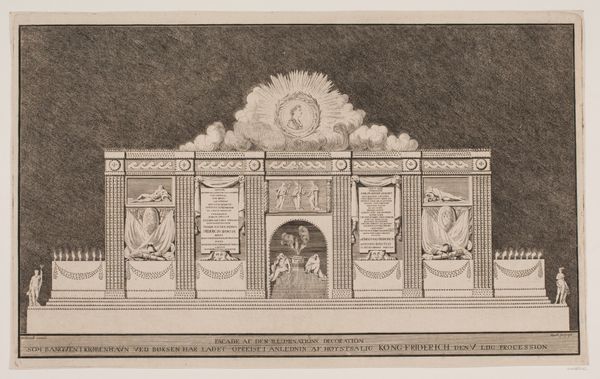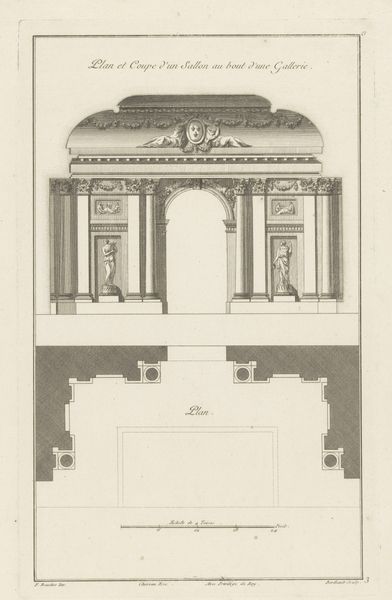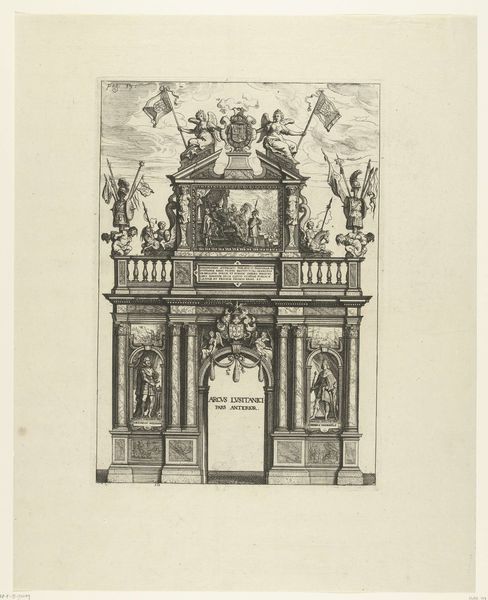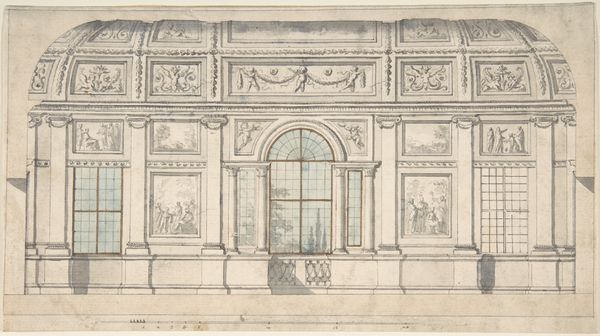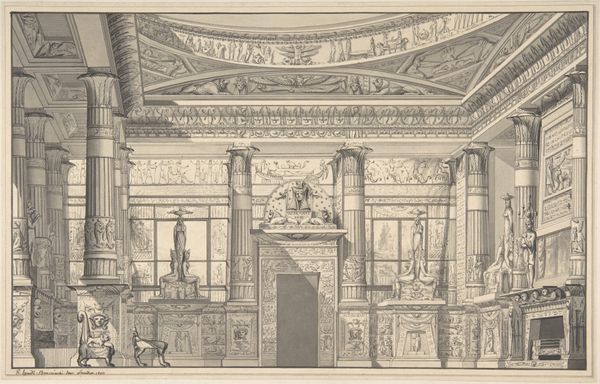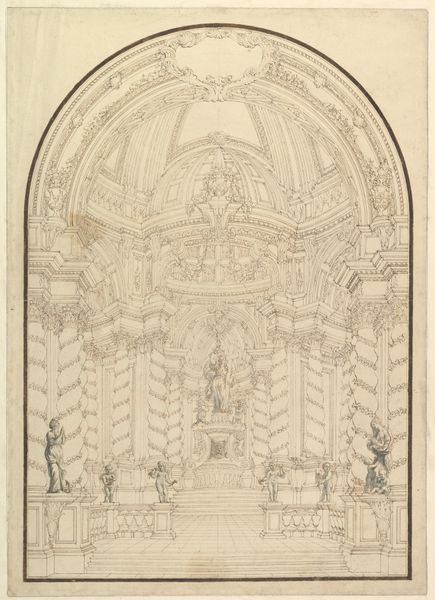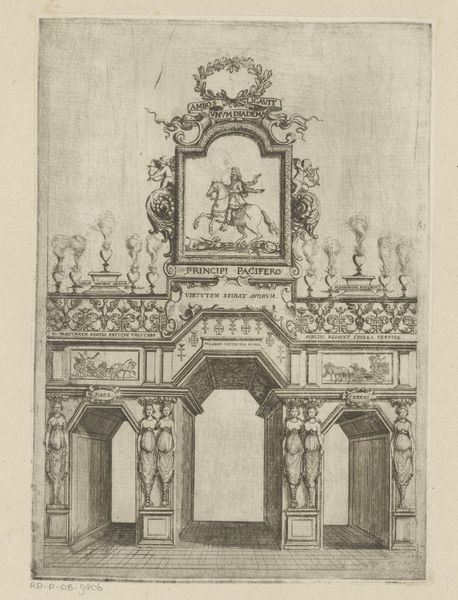
print, engraving, architecture
#
neoclacissism
# print
#
cityscape
#
history-painting
#
engraving
#
architecture
Dimensions: 510 mm (height) x 427 mm (width) (plademaal)
Curator: What strikes you about this print, titled "Caroline Mathildes indtog," created in 1766 by Johannes Gottfred Bradt? Editor: Well, the precision of the lines in the engraving is impressive! It feels quite formal and austere, like a stage set almost. What do you see in this piece? Curator: This piece is fascinating. It represents the kind of carefully constructed image that was essential for solidifying power and projecting legitimacy, particularly during a period defined by political upheaval. Think about the architecture depicted – how does it reinforce societal hierarchies and norms of the time, specifically regarding the role of royalty? Editor: The Neoclassical style definitely speaks to that power – the clean lines, the arches, it all evokes this sense of idealized authority and order. Curator: Exactly! And notice how the print commemorates Caroline Mathilde's arrival. Consider that a female monarch's entry into a city was more than just a procession. It was a carefully orchestrated event to project an image. How does this relate to modern performativity? Editor: I hadn’t really thought about that—it's easy to just see it as a historical record, but you’re right, there’s a lot of active construction of identity and power at play. Like a proto-social media presence. Curator: Precisely! And even in the choice of engraving. A medium allows for wide distribution of imagery and ideals, controlling narratives on a mass scale. Editor: This is really thought-provoking. I initially focused on the style, but you’ve shown me how to read the print as a constructed image reflecting complex societal power dynamics. Curator: It’s a great example of how art can serve as a powerful tool to examine and critique history.
Comments
No comments
Be the first to comment and join the conversation on the ultimate creative platform.
